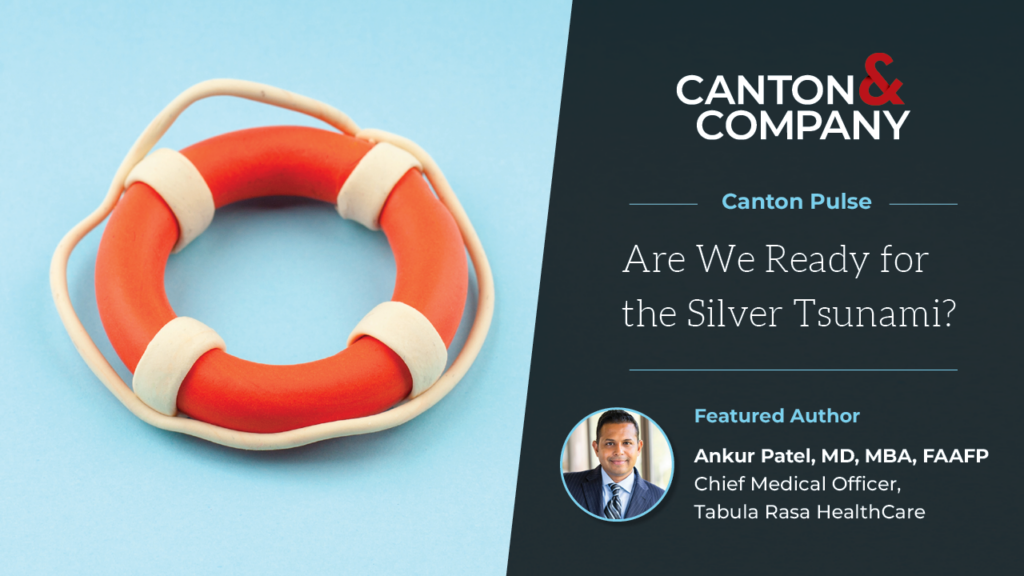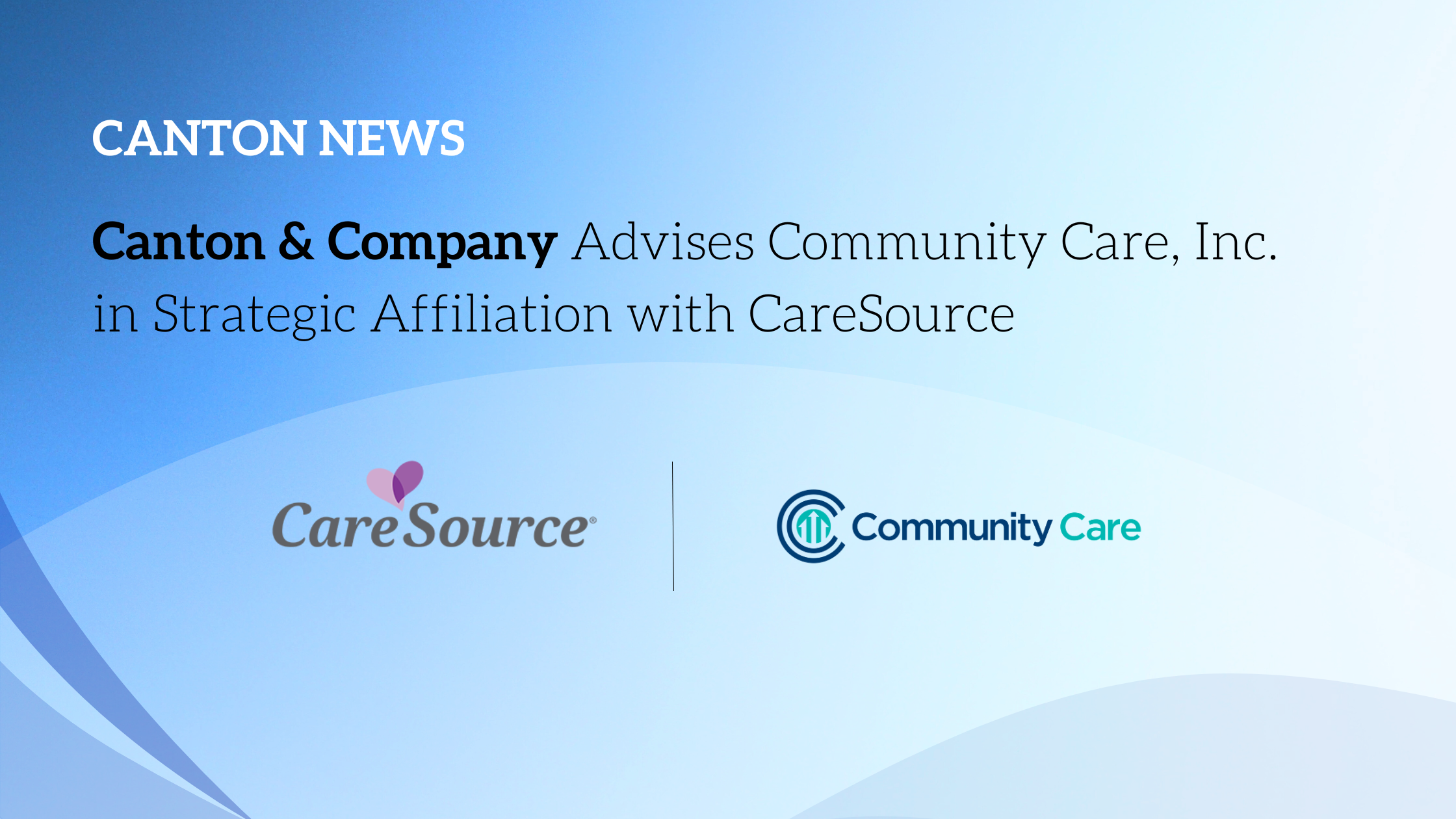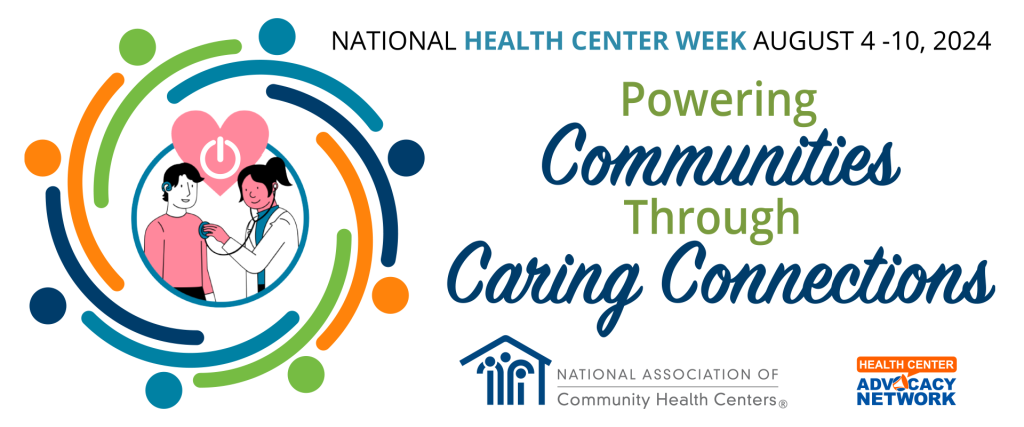Enhancing Care for Aging Community Members by Embracing Value-Based Care in Federally Qualified Health Centers
America is aging—currently, 10,000 people turn 65 every day.[1] Our country has a Silver Tsunami on the horizon. Are we ready for it?
The short answer is no, but preparing for it is never too late. As the American population ages, high-quality healthcare for seniors has become increasingly important, but how can we prioritize it?
To answer this question, we can look to Federally Qualified Health Centers (FQHCs) as a viable healthcare delivery model.
FQHCs have a solid foundation with the potential to care for our seniors more effectively. They also serve as lifelines for underserved communities, including numerous aging individuals who may face multiple health challenges.
FQHCs recognize the need to transition from a fee-for-service model to a value-based care approach to improve care outcomes and promote better health for seniors. This article explores the benefits of value-based care for seniors, examines the current readiness of FQHCs for value-based care implementation, and highlights how adopting and implementing value-based care can improve FQHCs’ care and outcomes for their aging community members.
Understanding the Benefits of Value-based Care for Seniors
As a healthcare delivery model, value-based care focuses on improving patient outcomes and experiences while reducing costs. This model offers several advantages for seniors:
- A Holistic Approach. Value-based care recognizes the importance of addressing the comprehensive needs of seniors, including physical, mental, and social aspects, to promote overall well-being. As a physician, I find it challenging to care for a diabetic patient’s physical health, such as controlling their blood sugar, if their mental health and social needs are unmet.
- Preventive Care. We have always heard that prevention is better than a cure. By emphasizing preventive measures like regular screenings, vaccinations, and health education, value-based care can help identify and manage chronic conditions at earlier stages. Such proactive measures ultimately reduce complications and hospitalizations among seniors.
- Care Coordination. Health systems often see things “fall through the cracks” due to inadequate care coordination; this mess contributes $25 to $45 billion in unnecessary care costs from hospital readmissions and other avoidable complications.[2] Value-based care encourages care coordination among interdisciplinary team members. This type of collaboration promotes seamless transitions between different levels of care, such as primary care, specialists, and hospitals, which prevents fragmented care plans and instead ensures continuity of care for seniors.
- Chronic Disease Management: In the US, 6 in 10 adults have a chronic condition, and 4 in 10 have 2 or more chronic conditions. Ninety percent of the nation’s $3.8 trillion annual healthcare expenditures are for people with chronic and mental health conditions.[3] Value-based care focuses on senior-prevalent chronic conditions like diabetes, COPD, congestive heart failure, and hypertension. Through innovative approaches, such as using remote patient monitoring and polypharmacy reviews with the pharmacist to decrease adverse drug events (which is the fourth leading cause of death),[4] value-based care promotes proactive management.
- Patient-centered Care: Value-based care places greater emphasis on patient engagement, shared decision-making, and personalized care plans tailored to the unique needs and preferences of seniors based on their religion, ethnicity, values, and belief. This approach enhances communication, improves adherence to treatment plans, and ultimately leads to better health outcomes.
Assessing Readiness for Value-based Care Implementation
While the benefits of value-based care for seniors are clear, many FQHCs are still assessing their readiness for its implementation. Factors influencing readiness include:
- Health IT Infrastructure. In population health, we often use engineer and statistician W. Edwards Deming’s quote: “In God we trust. All others must bring data.”FQHCs must evaluate their technological capabilities, including electronic health records (EHR) systems and data analytics tools, to effectively capture and measure patient outcomes and drive continuous improvement. By analyzing data and identifying trends, FQHCs can implement targeted interventions and programs to address the unique health challenges that their aging population faces. This proactive approach can prevent complications, promote healthy aging, and improve the community’s overall health.
- Quality Metrics and Reporting. FQHCs need to assess their current quality metrics, and to establish more robust metrics and reporting mechanisms that can track and monitor patient outcomes and meet the reporting requirements of value-based care payment models. Automatically generating quality metrics and reports is imperative and reduces manual work.
- Care Coordination Networks. Collaboration with community-based organizations, senior centers, and social service agencies along with your in-house social workers will strengthen care coordination networks. This pooling of knowledge and resources helps FQHCs to address social determinants of health and to provide holistic support to seniors, including transportation, housing, and nutrition assistance. Developing partnerships and networks with specialists and hospitals is crucial to facilitate coordinated, comprehensive care for seniors across various healthcare settings.
- Financial Models. FQHCs must assess their financial viability and explore alternative payment models to align incentives with value-based care goals. Suggested payment models include accountable care organizations (ACOs), Programs of All-Inclusive Care for the Elderly (PACE), or bundled payments. Few FQHCs are embracing the PACE model of care, but there is significant value in the PACE financial model that could improve our understanding of value-based care.
FQHCs are uniquely positioned to care for our underserved aging community members, and adopting value-based care offers immense potential to enhance the quality and effectiveness of care for seniors. By embracing a holistic approach, strengthening care coordination, prioritizing preventive services, implementing chronic disease management, and empowering seniors in their healthcare decisions, FQHCs can create better outcomes and foster healthier communities. As FQHCs continue assessing their journey toward value-based care, it’s critical that they revolutionize care for the aging population, ensuring that seniors receive the comprehensive and person-centered support they deserve.
[1] United States Census Bureau and America Counts Staff, “2020 Census Will Help Policymakers Prepare for the Incoming Wave of Aging Boomers,” America Counts: Stories Behind the Numbers, last updated February 25, 2022, https://www.census.gov/library/stories/2019/12/by-2030-all-baby-boomers-will-be-age-65-or-older.html.
[2] Rachel Burton, “Healthy Policy Brief: Improving Care Transitions,” HealthAffairs.org (September 13, 2012), https://www.healthaffairs.org/do/10.1377/hpb20120913.327236/full/.
[3] Christine Buttorff, Teague Ruder, and Melissa Bauman, Multiple Chronic Conditions in the United States [PDF] (Santa Monica, CA: Rand, 2017), https://www.rand.org/content/dam/rand/pubs/tools/TL200/TL221/RAND_TL221.pdf.
[4] Federal Drug Administration (FDA), “Preventable Adverse Drug Reactions: A Focus on Drug Interactions,” last modified March 6, 2018, https://www.fda.gov/drugs/drug-interactions-labeling/preventable-adverse-drug-reactions-focus-drug-interactions.
Let’s continue the conversation. Leave your information below:






.png)